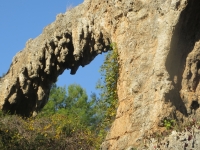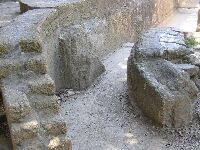

[to see the details, please click]
1. IntroductionIncrustation in lead and ceramic pipes and aqueduct channels, which occurred at varying rates according to the hardness of the water, was a problem. Polishing the cement in the channel served to alleviate this problem somewhat, but deposits of calcium carbonate and lime carbonate (also known as sinter) could choke the channel by as much as 50%. Pipes were an even bigger problem, as a pipe is likely to be full any layer of deposit reduces the cross-section by the square of the reduced diameter. Thus sinter had to be removed more often from pipes than from channels.If the pipe consited of lead, this was easy. According to Fahlbusch, lead pipes could be cut open, the sinter broken out, and the pipes soldered closed again (Hodge, 1991:8). Fahlbusch also speculates that boiling vinegar might have been used to remove sinter(Hodge, 1991:9). 2. Chemical proces
where: aq = dissolved in water; g = gas; l = liquid; s = solid In words: Hard water means that it contains much lime in the form of Calciumbicarbonate Ca(HCO3)2; that is why there are much Calcium- (Ca2+) and Hydrocarbonate- (HCO3) ions present. Under special circumstances the equilibrium turns more to the right, Calciumcarbonate (CaCO3) arises in solid state, plus water H2O and dissolved Carbondioxide CO2; the latter evaporates. The solid Calciumcarbonate (CaCO3) is usually called boiler scale or after the German term in aqueduct studies, sinter. The whole proces is called inscrustation. 3. ReseachDuring recent years, scholars try by geochemical and petropgaphical means to analyse the laminated deposits from ancient water channels to correlate the results with seasonal environmental changes and time lines, see a.o. the PhD-thesis of E.G. Surmelihindi (2013): Roman aqueducts and calcareous sinter deposits as a proxy for environmental changes (PhD-thesis 2013). |
| HOME | More literature on more aqueducts | Last modified: April, 2016 - (webmaster) |